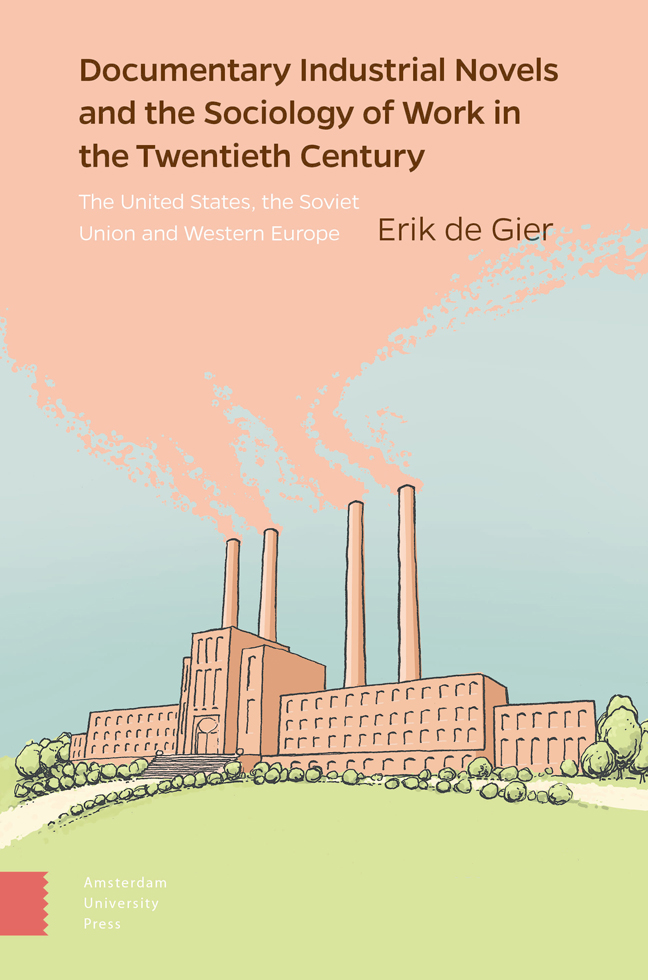 Documentary Industrial Novels and the Sociology of Work in the Twentieth Century
Documentary Industrial Novels and the Sociology of Work in the Twentieth Century Book contents
- Frontmatter
- Contents
- Acknowledgements
- Preface
- Note on sources
- 1 Bringing together the fields of sociology and literature: Towards an integration of Modernist industrial novels into industrial sociology
- 2 The rise of welfare work capitalism and the Americanization of production processes in the United States, Western Europe, and the Soviet Union
- 3 Between ‘utopia’ and ‘dystopia’: American 20th-century industrial novels
- 4 Socialist-realist industrial novels in the Leninist and Stalinist Soviet Union in the 1920s and 1930s
- 5 New Objectivity industrial novels in Weimar Germany
- 6 Neo-realist industrial novels in post-war Italy: The Olivetti case
- 7 Simone Weil and Modernist industrial novels in France
- 8 Transnational comparison and concluding reflection
- Bibliography
- Index
4 - Socialist-realist industrial novels in the Leninist and Stalinist Soviet Union in the 1920s and 1930s
Published online by Cambridge University Press: 20 February 2024
- Frontmatter
- Contents
- Acknowledgements
- Preface
- Note on sources
- 1 Bringing together the fields of sociology and literature: Towards an integration of Modernist industrial novels into industrial sociology
- 2 The rise of welfare work capitalism and the Americanization of production processes in the United States, Western Europe, and the Soviet Union
- 3 Between ‘utopia’ and ‘dystopia’: American 20th-century industrial novels
- 4 Socialist-realist industrial novels in the Leninist and Stalinist Soviet Union in the 1920s and 1930s
- 5 New Objectivity industrial novels in Weimar Germany
- 6 Neo-realist industrial novels in post-war Italy: The Olivetti case
- 7 Simone Weil and Modernist industrial novels in France
- 8 Transnational comparison and concluding reflection
- Bibliography
- Index
Summary
Abstract
The focus in this chapter is on the mimicking of the Americanization of production processes in the Soviet Union during the 1920s and 1930s. In this period the Soviet Union underwent a process of crash industrialization, with the intention to surpass even the United States and become the world's foremost industrial nation. Architecture, arts, film, photography, and industrial or ‘factory’ novels were marshalled to contribute to this end. Based on the formal state ideology of socialist realism, many industrial novels, mainly propagandistic, were written by individual writers as well as writers’ collectives. Generally, writers of factory novels were seen as ‘engineers of the soul’. Four of these novels are analysed here against the background of the Americanization of Soviet industry.
Keywords: Soviet Union, American tempo, Fordism, shock brigades, Stakhanovism, industrial novels.
Introduction
Like the United States and Weimar Germany, the Soviet Union was at the forefront of writing Modernist industrial novels in the 1920s and 1930s. But as has been argued, in contrast to the US and European countries, the primary goal of Soviet documentary literature was propagandistic. This implied denying the existence of a class-struggle in the Soviet Union between capital and labour, as well as ‘highlighting the great progress being achieved across the vast nation’ (Freeman, 2019, p. 211). The monthly large-format magazine USSR in Construction, published between 1930 and 1941 in Russian, English, German, French, and partly also in Spanish, combined photography and journalism. Its illustrative issues were devoted to dams, canals, hydroelectric plants, railroads, car and tractor factories such as the Gorky Automobile Works (called the ‘Soviet Detroit’) and the gigantic Magnitogorsk Iron and Steel Works. Famous photographers such as Alexander Rodchenko were involved, as well as ‘the number one’ writer of the Stalin Era, Maxim Gorky. Next to this monthly magazine, comparable documentary books were published, such as, for example, the seven-volume work Heavy Industry (1935). In 1931 Maxim Gorky initiated a big documentary project on the History of Factories and Plants. By 1938 this project had resulted in the publication of 30 volumes. Another notable documentary work of the 1930s was Those who Built Stalingrad, as Told by Themselves. This was an oral history of the Soviet and foreign workers who built the Tractorstroi (tractor factory) of Stalingrad. Renowned western industrial photographers and cinematographers went to the Soviet Union to picture the main industrial sites of the First Five-Year Plan.
- Type
- Chapter
- Information
- Documentary Industrial Novels and the Sociology of Work in the Twentieth CenturyThe United States, the Soviet Union and Western Europe, pp. 59 - 86Publisher: Amsterdam University PressPrint publication year: 2023


